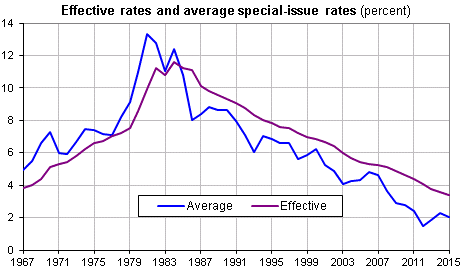The theft of resources from Social Security is likely the largest hoax in history, but people love it.
Many versions of the myth persist. Many blame LBJ. Some blame Reagan or Bush. Despite passionate conviction of its followers, the Social Security Administration attributes each flavor of Kool-Aid to urban legend. There are simply no records to support the belief that payroll taxes were used inappropriately by any administration.
The word “steal” is used very loosely in the Social Security debate. Chris Christie for example seems to think that the purchase of government bonds is stealing.
If we apply the wider meaning of the word to the history of the program, there is one person who has bilked billions from the Social Security Trust Fund, and even confessed to it in the Congressional record. He has escaped thus far all blame, if not all notice. Who is the man and how did he accomplish what presidents could not?
The man is Ben Bernanke, and his tool of trade is a set of monetary policies specifically designed to lower long-term interest rates. Make no mistake. Lower long-term interest rates hurt bond savers. The offsetting point of these monetary policies is to lower the cost of borrowing throughout the economy in hopes of spurring economic growth. So some will argue that his economic strategy is a bet rather than theft.
The consequence of his actions is, of course, the reduction of investment returns of the Social Security Trust Fund. As the price of lending money to the government falls, the obvious victims of this strategy are the lenders to the government. The Social Security Trust Fund is likely the largest lender to the federal government – boom.
The resources of the Social Security Trust Fund serve as a proxy for the earning power of workers. In 2015, the system earned nearly $100 billion in interest, effectively simulating roughly 25 million workers. These workers are wonderful for the system because the revenue created by the Trust Fund does not create the obligation of future benefits.
The interest rate that is earned on bonds purchased by the Social Security Trust Fund is determined annually by the market. As a result of the Fed’s policies, the bonds purchased after 2007 by the Trust Fund earned lower and lower returns.
In 2007, the system bought bonds which earned 5.0 percent. In 2008, the interest rate on bonds purchased fell to 4.0 percent, and so forth until the last bonds purchased in 2016 will collect 1.875 percent.
Every year, the Trust Fund redeems a portion of its high rate bonds and uses the money to purchase with lower yield bonds. The 2015 Trustees Report shows that the system holds about $160 billion in assets due to mature in 2016. Collectively they will draw slight more 4 ¼% or nearly $7 billion. The revenue was used to buy bonds that pay less than half that amount.
Predictably enough, the portfolio as a whole also showed continued declines, with the effective interest rate falling from 5.3 percent to 3.4 percent.
The math of the decline is not terribly complicated. If the Trust Fund had earned the same rates as it did in 2007, the system would have created $50 billion in incremental revenue in 2015 alone, effectively replacing the need for 12 million workers.
The consequences of the Fed’s actions on Social Security were exposed in 2012. The Trustees Report for the Social Security Trust Funds reduced the expected interest earnings of the Trust Fund by roughly $1 trillion, reducing the projected solvency of the program from 2036 to 2033.
For more detail on the numbers, see Ben Bernanke Is Bankrupting The Social Security Trust Fund.
Clearly the fall in projected revenue demonstrates that these policies contain an unintended consequence for all pensions including Social Security. Bernanke defenders will assure you that these stimulants created enough jobs offset the interest revenue lost. Maybe. It is a difficult sell in the weakest economic expansion since World War II.
These questions deserve more attention because Bernanke reappeared last week to urge a more virulent version of these economic policy, NIRP, or Negative Interest Rate Policy. Again the point here is to lower interest rates. Whether it is called Twist, QE, ZIRP, or NIRP, the point is that his goal will have side-effects on Social Security and pensions as a whole.
It may be theft, an investment, or just another bad bet crafted by well-dressed academics to justify their day job. It’s certainly well past time that the full consequences of his monetary policies are discussed.




